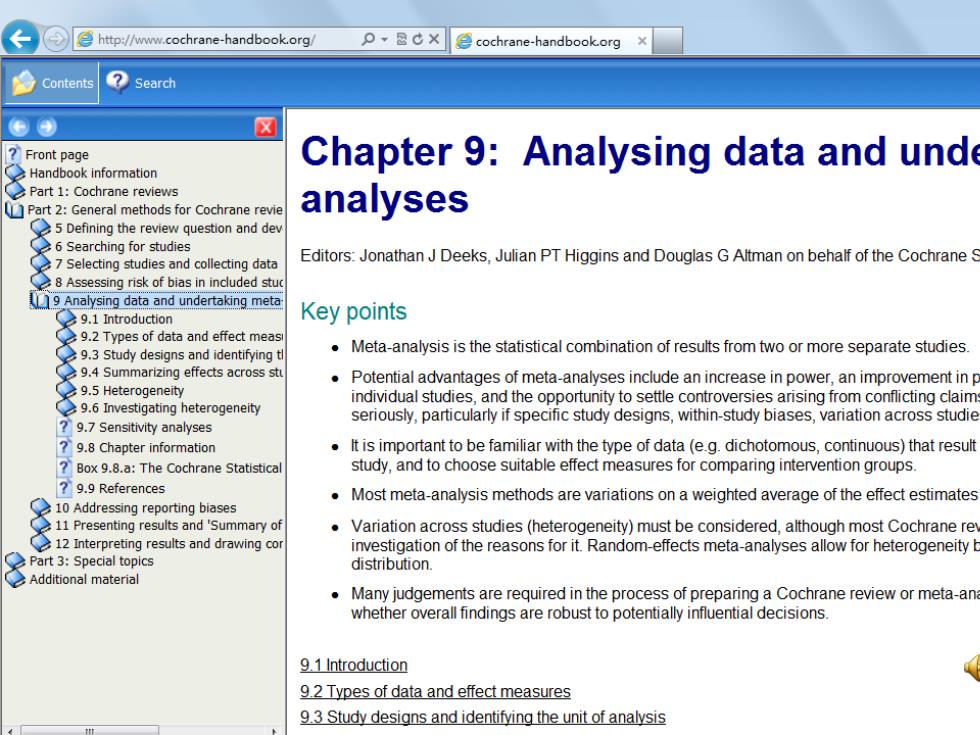正在加载图片...

←③http:lw.cochrane-handbook.org xcochrane-handbook.org Contents ?Search ?Front page Chapter 9:Analysing data and unde Handbook information Part 1:Cochrane reviews Part 2:General methods for Cochrane revie analyses 5 Defining the review question and dev 6 Searching for studies 7 Selecting studies and collecting data Editors:Jonathan J Deeks,Julian PT Higgins and Douglas G Altman on behalf of the Cochrane S 8 Assessing risk of bias in incuded stu 9 Analysing data and undertaking meta 9.1 Introduction Key points 9.2 Types of data and effect meas 9.3 Study designs and identifying tl Meta-analysis is the statistical combination of results from two or more separate studies. 9.4 Summarizing effects across stu 9.5 Heterogeneity Potential advantages of meta-analyses include an increase in power,an improvement in p individual studies,and the opportunity to settle controversies arising from conflicting claims 9.6 Investigating heterogeneity seriously,particularly if specific study designs,within-study biases,variation across studie 9.7 Sensitivity analyses ?9.8 Chapter information It is important to be familiar with the type of data(e.g.dichotomous,continuous)that result Box 9.8.a:The Cochrane Statistical study,and to choose suitable effect measures for comparing intervention groups. ?9.9 References Most meta-analysis methods are variations on a weighted average of the effect estimates 10 Addressing reporting biases 11 Presenting results and 'Summary of Variation across studies(heterogeneity)must be considered,although most Cochrane re 12 Interpreting results and drawing cor investigation of the reasons for it.Random-effects meta-analyses allow for heterogeneity Part 3:Special topics distribution. ○Additional material Many judgements are required in the process of preparing a Cochrane review or meta-an whether overall findings are robust to potentially influential decisions. 9 1 Introduction 9.2 Types of data and effect measures 93 Study designs and identifying the unit of analysis